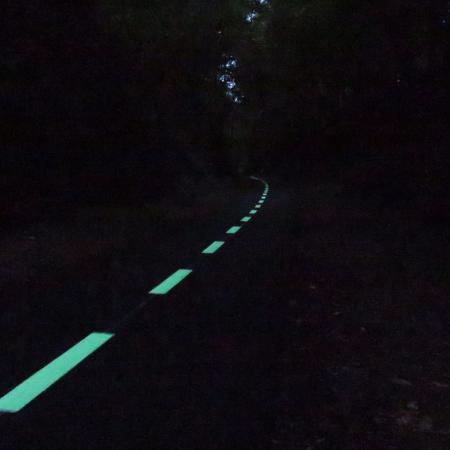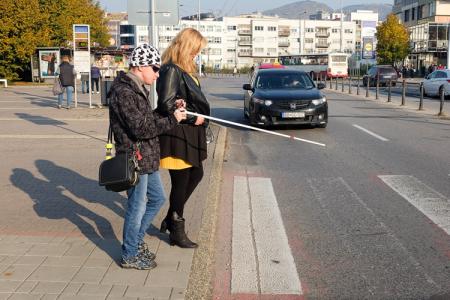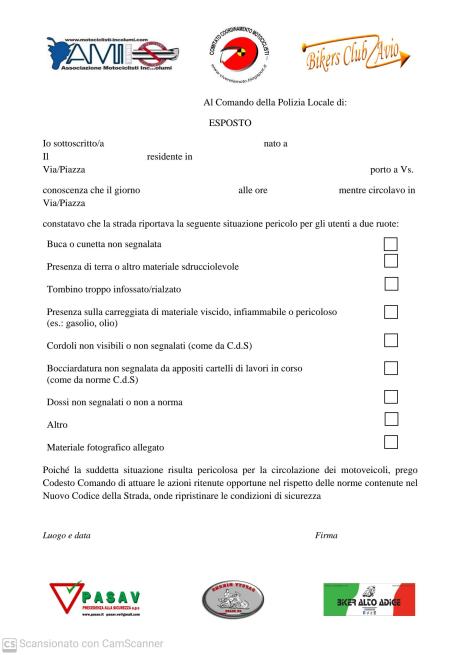Our members are dedicated to improving road safety and sharing their knowledge with the wider community. Here, you can explore our members' good practices – initiatives that have been assessed for their effectiveness in addressing a road safety problem and have proven results.
Get inspired – and sign up to share your good practices too!

Tuesday, May 16, 2023
Visibilité sur une portion non éclairée pour les cyclistes et les piétons.
Difficulté d'installer un éclairage public.
Cette zone a été choisie car elle se trouve dans un sous-bois. Il s’agit donc d’une portion plus sombre la nuit », commente Gauthier Michaux, expert du SPW Mobilité et Infrastructures.
En ce qui concerne les marquages routiers luminescents, nous avons principalement adressé les défis suivants liés à la sécurité routière :
Visibilité dans les zones non éclairées : Les voiries sans éclairage présentent un risque accru pour les piétons et les cyclistes, car ils sont moins visibles pour les conducteurs. Les marquages routiers luminescents ont été développés pour résoudre ce problème en offrant une visibilité améliorée, même dans l'obscurité.
Sécurité des piétons et des cyclistes : Les piétons et les cyclistes sont particulièrement vulnérables, en particulier dans les zones non éclairées. Les marquages routiers luminescents permettent de délimiter clairement les zones sécurisées pour les piétons et les cyclistes, les aidant ainsi à naviguer en toute sécurité sur ces voies.
Réduction des accidents : Les accidents impliquant des piétons et des cyclistes sont malheureusement fréquents. En améliorant la visibilité et la compréhension des conducteurs quant à la présence de piétons et de cyclistes, les marquages routiers luminescents contribuent à réduire les accidents et à sauver des vies.
Sensibilisation des conducteurs : Les marquages routiers luminescents servent également à sensibiliser les conducteurs à la présence de piétons et de cyclistes, en les incitant à être plus prudents et attentifs dans les zones non éclairées.
En abordant ces défis, les marquages routiers luminescents offrent une solution novatrice pour améliorer la sécurité des piétons et des cyclistes sur les routes non éclairées, contribuant ainsi à créer un environnement routier plus sûr pour tous les usagers de la route.
Difficulté d'installer un éclairage public.
Cette zone a été choisie car elle se trouve dans un sous-bois. Il s’agit donc d’une portion plus sombre la nuit », commente Gauthier Michaux, expert du SPW Mobilité et Infrastructures.
En ce qui concerne les marquages routiers luminescents, nous avons principalement adressé les défis suivants liés à la sécurité routière :
Visibilité dans les zones non éclairées : Les voiries sans éclairage présentent un risque accru pour les piétons et les cyclistes, car ils sont moins visibles pour les conducteurs. Les marquages routiers luminescents ont été développés pour résoudre ce problème en offrant une visibilité améliorée, même dans l'obscurité.
Sécurité des piétons et des cyclistes : Les piétons et les cyclistes sont particulièrement vulnérables, en particulier dans les zones non éclairées. Les marquages routiers luminescents permettent de délimiter clairement les zones sécurisées pour les piétons et les cyclistes, les aidant ainsi à naviguer en toute sécurité sur ces voies.
Réduction des accidents : Les accidents impliquant des piétons et des cyclistes sont malheureusement fréquents. En améliorant la visibilité et la compréhension des conducteurs quant à la présence de piétons et de cyclistes, les marquages routiers luminescents contribuent à réduire les accidents et à sauver des vies.
Sensibilisation des conducteurs : Les marquages routiers luminescents servent également à sensibiliser les conducteurs à la présence de piétons et de cyclistes, en les incitant à être plus prudents et attentifs dans les zones non éclairées.
En abordant ces défis, les marquages routiers luminescents offrent une solution novatrice pour améliorer la sécurité des piétons et des cyclistes sur les routes non éclairées, contribuant ainsi à créer un environnement routier plus sûr pour tous les usagers de la route.

Friday, May 12, 2023
Biela palica poskytuje ľuďom so zrakovým postihnutím možnosť zvýšiť svoju bezpečnosť, samostatnosť a nezávislosť v pohybe. Je symbolom nevidiacich ľudí, nenahraditeľnou pomôckou na orientáciu. Je však nevyhnutné, aby boli potreby nevidiacich a slabozrakých ľudí vnímané a rešpektované a aby najmä vodiči boli ohľaduplní voči týmto zraniteľným účastníkom cestnej premávky. Prechádzanie ciest je pre ľudí so zrakovým postihnutím najmä v oblastiach s hustou a rýchlou dopravou veľkou výzvou a častokrát aj rizikom. Preto potrebujeme edukovať vodičov, ako sa správať voči používateľom bielych palíc.

Friday, May 12, 2023
The main problems and challenges in terms of road safety in our territory are linked to road indiscipline on the part of electric scooter and bicycle users, predominantly young and, consequently, on the atmosphere of insecurity that this causes in the rest of the actors present on public roads.
For this reason, it is necessary to tackle the problem through road safety training strategies for these groups, in addition to those others labeled as vulnerable.
For this reason, it is necessary to tackle the problem through road safety training strategies for these groups, in addition to those others labeled as vulnerable.

Friday, May 12, 2023
A simply file to print and give in Public Administrations offices tò cooperate in fixing black spots.

Wednesday, May 10, 2023
От 2016 година Българска асоциация за рекреация, интеграция и спорт /БАРИС/
организира и провежда Национален автомобилен шампионат за хора с увреждания
съвместно със Спортната комисия за хора с увреждания към Автомобилната федерация на
България /АФБ/. Основната идея е чрез организацията и провеждането на Автомобилни
състезания за хора с увреждания с участието на автомобили управлявани от хора с
различни увреждания да се постигне фокусиране на общественото внимание върху
възможностите за социално включване и интеграция на хората с увреждания чрез
придобиване на умения за управление на моторни превозни средства адаптирани
съобразно техните специфични нужди. Нашето желание е да се покаже, че решаващо е не
физическото увреждане, а волята и способността на човека, за да живее пълноценно и да
бъде полезен на обществото и да постигнем промяна в обществените нагласи към хората с
увреждания като водачи на МПС.
организира и провежда Национален автомобилен шампионат за хора с увреждания
съвместно със Спортната комисия за хора с увреждания към Автомобилната федерация на
България /АФБ/. Основната идея е чрез организацията и провеждането на Автомобилни
състезания за хора с увреждания с участието на автомобили управлявани от хора с
различни увреждания да се постигне фокусиране на общественото внимание върху
възможностите за социално включване и интеграция на хората с увреждания чрез
придобиване на умения за управление на моторни превозни средства адаптирани
съобразно техните специфични нужди. Нашето желание е да се покаже, че решаващо е не
физическото увреждане, а волята и способността на човека, за да живее пълноценно и да
бъде полезен на обществото и да постигнем промяна в обществените нагласи към хората с
увреждания като водачи на МПС.